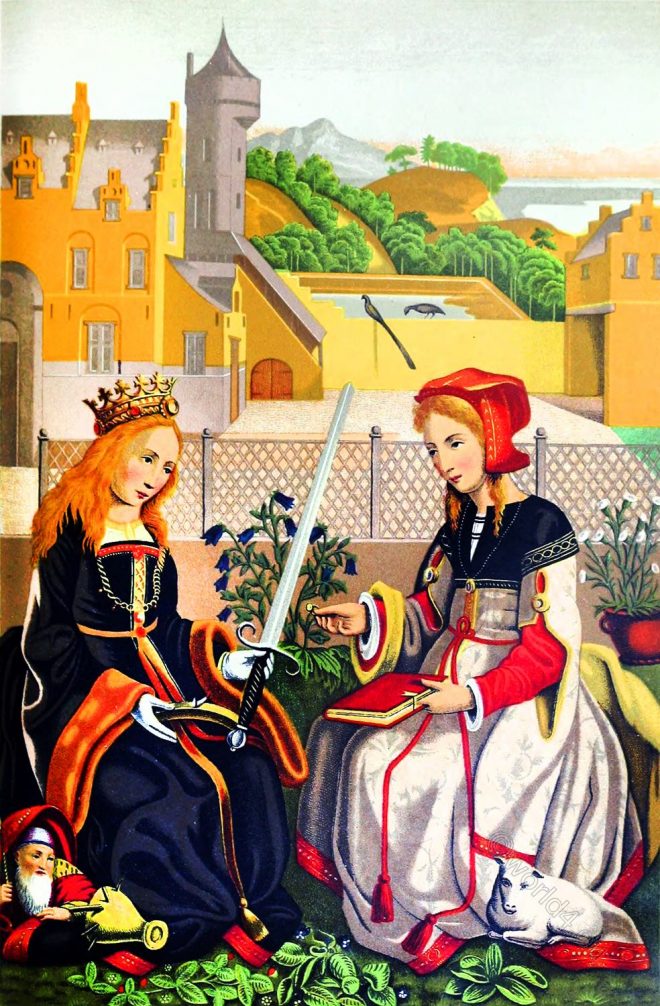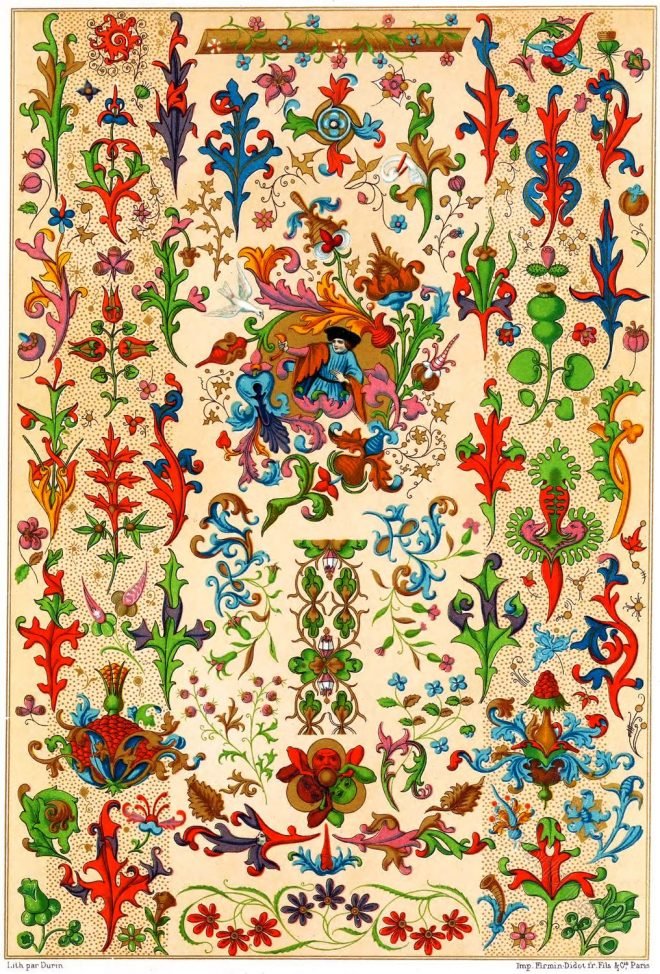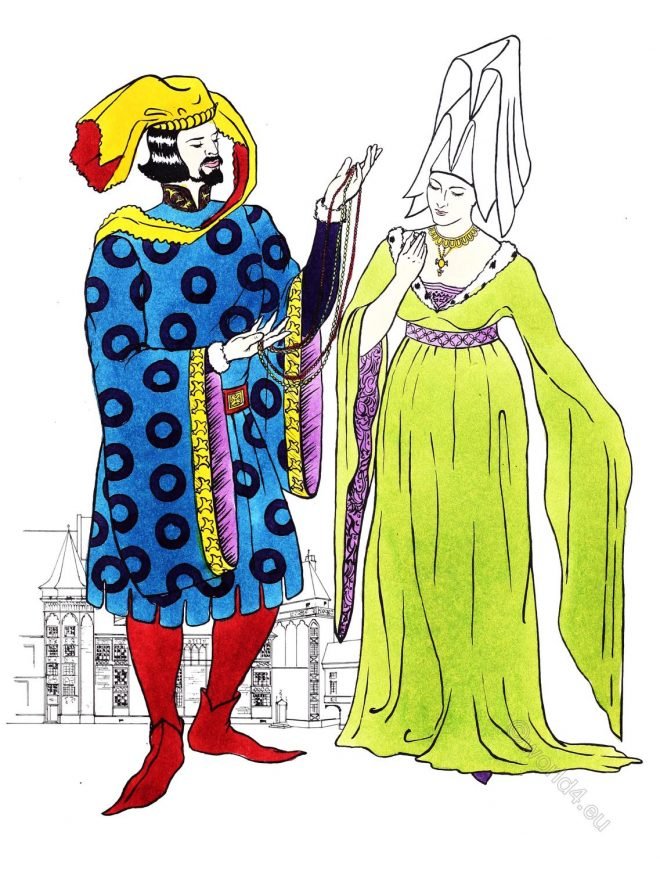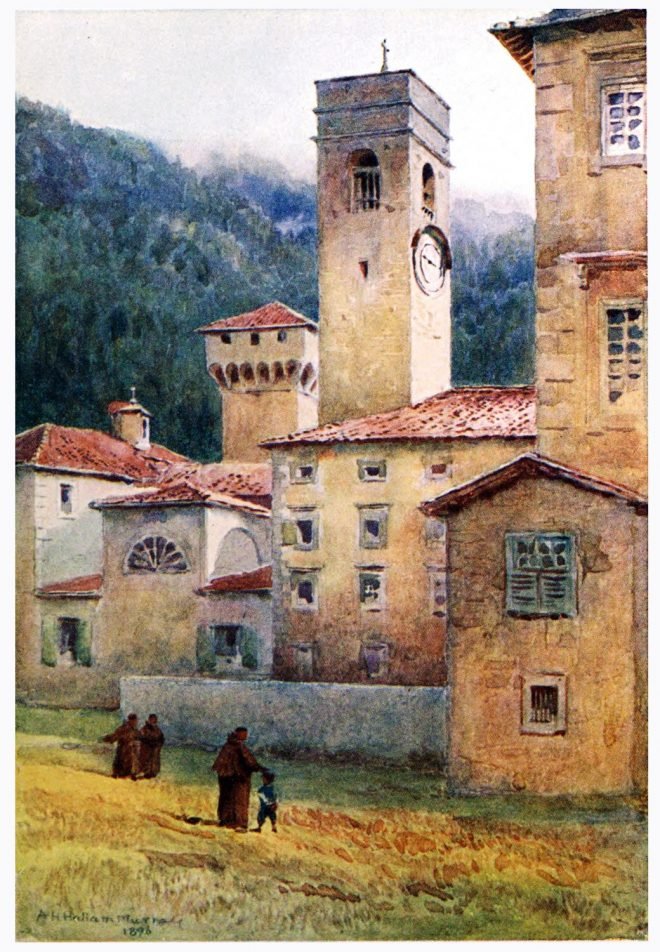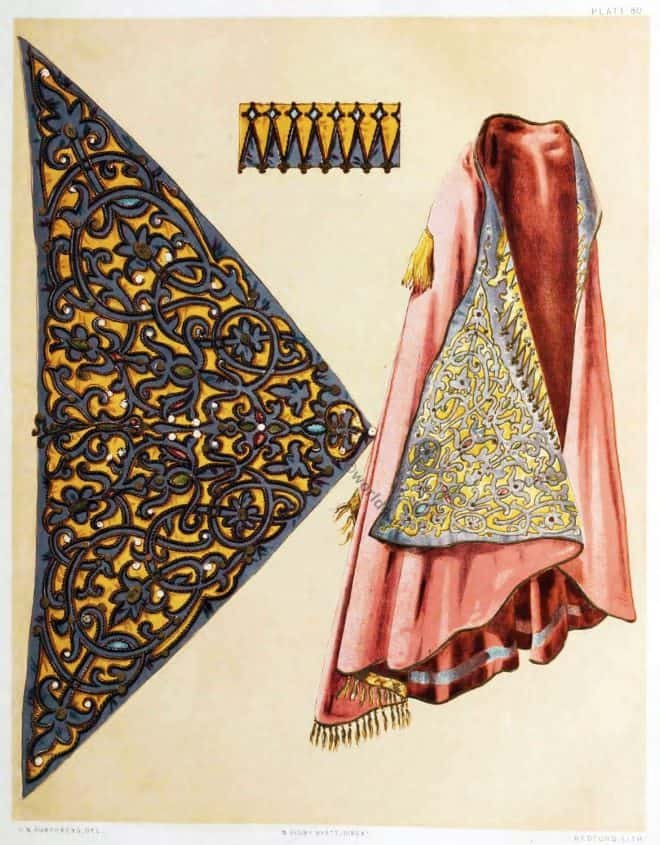St. Catherine of Alexandria holding in her hands instruments of her punishment. On the right is St. Agnes, and a lamb, the emblem of her innocence and gentleness.
Category: Middle Ages
Middle Ages costumes and fashion. Period between 700 to 15th century. Style of Byzantine, Carolingian, Romanesque, Gothic and Renaissance.
Anglo-Saxon dress, ornaments and relics of gold and bronze.
The great love of the Saxons for display in dress and ornament led to a very, remarkable development of artistic skill in fashioning and decorating articles of jewelry, which were worn by men in greater profusion than by women.
Constance of Castile, Duchess of Lancaster with horned head-dress.
Constance of Castile (1354 – 24 March 1394) the second wife of John of Gaunt Duke of Lancaster with horned head-dress.
Orders of monks and nuns. Historical religious habit of the Orient.
These oriental monastic and nun’s habit date back to the earliest times of Christianity.
Conventional flora and flower work. Middle ages. 15th century.
THE details that fill the accompanying plate are too numerous for us to indicate the sources from which they have been derived, but they have all been taken from manuscripts of the fifteenth century.
The costume worn in the late 14th or early 15th century.
History of Costume. The chaperon, cote-hardie, houppelande, liripipe, poulaines. Fashion of the middle ages.
Italy. Vallombrosa Abbey and the Camaldolese Order in 1905.
The Abbey of Vallombrosa is located in the village of the same name in the municipality of Reggello, in the province of Florence in the Apennines and diocese of Fiesole,… Read More
Byzantine dalmatica. Albanian embroidery. 12th century.
Chasuble. Liturgical vestment. Albanian embroidery on a twelfth-century Byzantine dalmatica.
A Mirror Case of the 14th century. The Assault of the Castle of Love.
A mediaeval mirror case. The subject is a favorite one with mediaeval artists, and is known as “The Assault of the Castle of Love.”
Russian Women’s, Boyars, Cossacks and Nobility costumes.
Russia 16th and 19th century. Historical persons and folk costumes.

